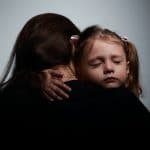
Prevention of burns should be foremost in your mind. Minor burns may cause discomfort, but severe burns can endanger life or lead to crippling deformities. Parents should take every precaution to make sure irons are turned off, fires have guards around them and their children are kept away from hot surfaces and fire in general.
Scalds are where hot liquids cause the burn. In the case of scolds you must make sure that clothing and materials that might still contain hot liquids are removed from the skin as soon as possible. However be careful as removing clothing may cause more damage. Always assess the burn or scald carefully and remember cooling is the most important step.
Treatment – first aid
Whatever the extent of the burn, you should first put cold water over the burn. Do not use ice. If cold water is not available, keep pouring tap or stored water over the area for some time. Experts recommend cooling for at least ten minutes. Remove all clothing from the burnt area. Always remove clothing gently and carefully as skin may be damaged in this process. Cover the area with a clean piece of cloth. Do not apply any ointment, ghee or honey without the advice of your doctor. Do not puncture the blisters. Generally, doctors leave the small blisters alone. The large blisters are often punctured to avoid accidental rupture and consequent infection.
If in doubt just douse in cold water and get medical help
If in doubt seek medical attention
If the burn is small and only affects the top layers of the skin it will probably heal naturally with a little first aid. However, any burns that cause you concern must be looked at by a professional.
Let your doctor decide if the child needs hospitalization. This may have to be considered in case of burns of the face, hands, genitals and feet; in all third-degree burns; first and second-degree burns involving more than 25% of the body; and burns due to chemicals or electric shock.
Burn classification 1st to 3rd degree
In first-degree burns, the patient only has redness with or without slight swelling of the skin. Second degree burns cause blisters and much swelling. Third degree burns damage even the deeper layers of the skin. The skin may appear white or charred.
In case of extensive burns, do not give anything by mouth to the child until you have seen the doctor. Otherwise, plenty of liquids should be given. If the child has received his usual immunizations as per schedule, there is no need for a tetanus immunization injection, except for severe burns when your doctor may decide to give it.







